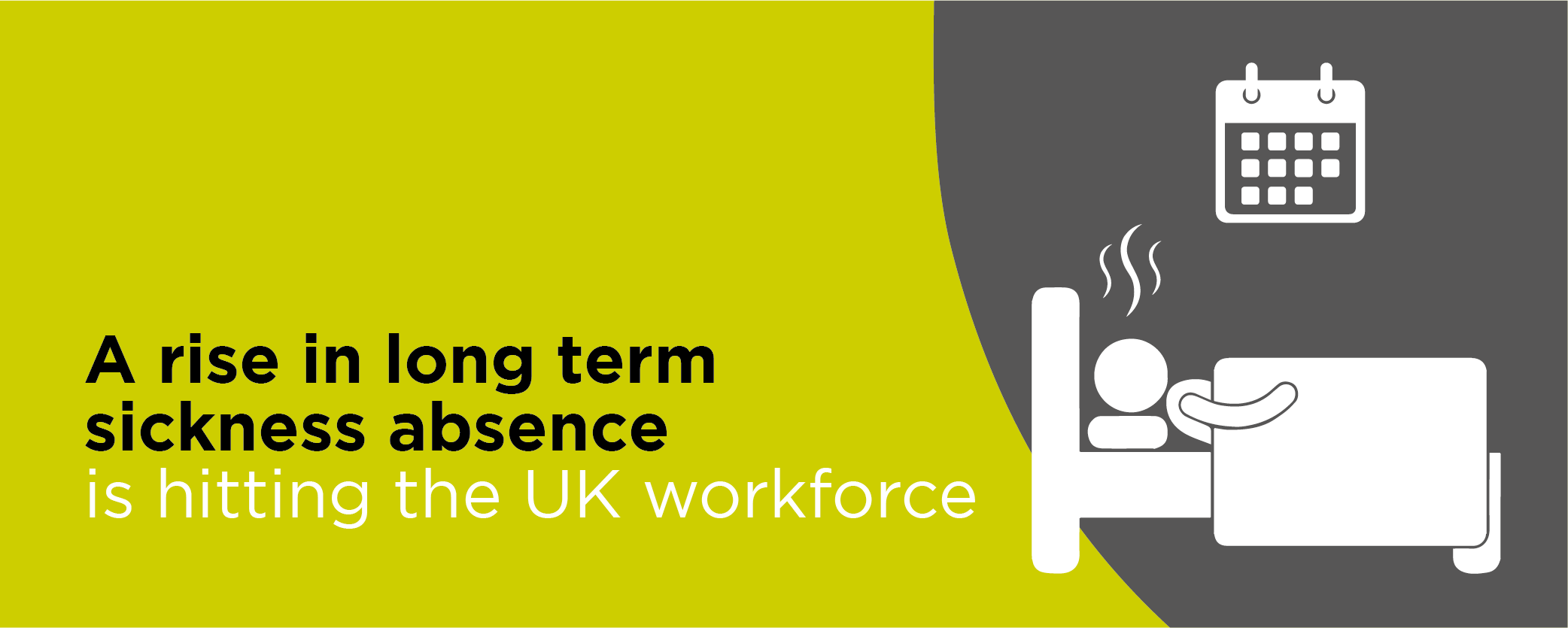- Basildon 01268244144
- Chelmsford 01245453800
- Colchester 01206217300
- London 020 4586 1280

According to data released by the Office of National Statistics, the UK has reached a record high in the number of people on long-term sickness absence. Data shows a record 26,000 additional employees recorded as economically inactive between April and June 2023. This is the number of working-age adults who are not at work or looking for jobs.
This means a total of 2.58 million employees are on long-term sickness; a rise of 449,000 since COVID hit.
Why is long-term sickness increasing?
One possible explanation could be that increasing pressure on the NHS and longer wait times are resulting in delays to non-urgent operations and treatments, leaving people in poorer health because their medical conditions have not been dealt with.
Government policy solutions that aim to reduce the number of people retiring early or encourage the retired to go back to work are likely to have only a limited effect in reversing recent trends and the policy fails to focus on why long-term sickness figures have risen so much. Although the separate plans that aim to tackle the NHS backlog are welcome, it will only be in the long run that their impact will be felt.
Could long-term sickness lead to a shrinking workforce?
The high levels of sickness absence in the workforce are undoubtedly contributing to the ongoing skills shortage, with the demand for talent in certain sectors remaining high. Notably, there are significant problems recruiting and retaining staff in the health and care sectors.
Average pay increased by almost 8% year-on-year from April to June 2023; the highest growth rate since records began. But when adjusted for inflation, pay excluding bonuses only rose by 0.1%.
While rising pay is welcome news for many as they struggle with the cost of living pressures, it is likely that the Bank of England will want to consider further interest rate hikes in order to mitigate the effects of a wage-price spiral.
What can employers do if they have long-term sick employees?
We all know that reducing NHS waiting times is no quick fix. Employers may therefore want to consider whether there are ways in which they can support their staff to help them return to work if possible, such as part-time working or other flexible arrangements. Employers might also want to invest in occupational health schemes that help to reduce the risk of employees becoming sick in the first place.
Where employers have employees on long-term sickness absence, they will need to be effectively managed. This should include:
Ensuring an effective sickness policy is in place
Keeping track of and assessing risk
Having a plan for long-term absence
Providing support for employees with a disability
Monitoring conduct during sick leave
Having a plan for the employee’s return to work
Consider dismissal and its alternatives if the situation demands that course of action.
If you have any questions or would like support in managing long-term sickness absence in the workplace, or if you need help in drafting appropriate, fit-for-your-business policies, please get in touch with the BLHR & Employment Team. We will be happy to discuss how we can help. We offer a fixed fee BLHR service which you can access here. Please contact me via email at samantha.randall@birkettlong.co.uk or call me on 01245 453838



Comments